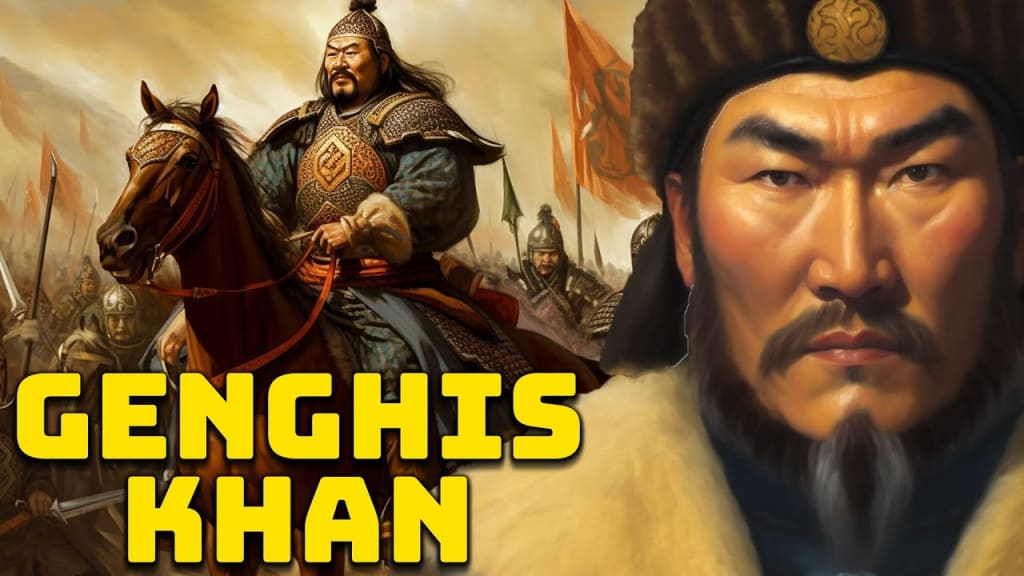Unveiling Genghis Khan's Dark Legacy
The Tragic Fate of Captive Women

When the name Genghis Khan is mentioned, one may immediately conjure up images of a fierce warrior who built an empire that shattered the boundaries of what was believed to be possible in the 13th and 14th centuries. He was able to conquer lands from China and Persia to large parts of Russia and Ukraine, and was even at the gates of Vienna. His success in military conflict was such that his strategies and tactics are still studied in military academies today. While he built the largest contiguous land empire in history, there is a darker side to his conquests, particularly when examining the horrifying treatment of captive women during his campaigns.
When Genghis Khan and his fearless Mongol warriors conquered a city or village, they did not simply take the territory, but also took the survivors as prisoners to serve the Mongolian Empire. Often, these captives wanted to resist, and the Mongol warriors used several methods to subdue them. Once captured, the lives of these women became worthless in the eyes of society, and they only lived because of the mercy of their captors. They could be sold, enslaved, or even killed depending on the mood of their captors. After being brought back into the heart of the Mongolian Empire, their fate was dependent on the part of the empire they were brought to. The Mongol Empire was vast and had different groups and subcultures, so the treatment of women could vary. However, there were common patterns that we will examine in detail.
Most of the captive women were sent to work in labor camps, while others were put into harems. Some were lucky enough to marry their captors, and some even had to serve in the Mongolian army. Each woman lived in a strictly controlled environment, and every single step was closely watched to prevent any riots from happening. Aside from fulfilling traditional roles, women in the harem also served specific cultural and spiritual functions. They were often seen as vessels of purity and participated in various rituals to give blessings and good fortune to the great Khan and his empire. However, they had to obey the master's command, and they could still do nothing without the permission of their captors. Despite the relative luxury and security they had, the harem was ultimately a golden cage. These women had no personal lives anymore, were thousands of miles away from their families, and only lived at the mercy of the Khan's desires. Falling out of favor could result in harsh consequences that ranged from demotion to even death.
After the death of Genghis Khan, even those who had high ranks in the harem were usually forgotten and left to fend for themselves in a society that stigmatized them for their past. These women were often excluded from the community, and their children were marginalized. However, some influential women managed to rise within the oppressive system. Yesui, a Nestorian Christian, was one of Genghis Khan's so-called golden wives, meaning she brought political alliances along with her union. Yesui was often used as a symbol of religious tolerance of the empire, and her faith led to Nestorian Christianity being given particular freedoms. Jochi Katun, who was married to Genghis' oldest son, managed a vast estate and played a crucial role in diplomatic relations, often receiving foreign dignitaries and participating in political discussions.
Not every beautiful or exotic woman made it to Genghis Khan's personal harem. Many were sold as slaves, where they ended up doing domestic chores for the Mongols or even worse, taken into sexual slavery where they were subject to sexual violence. These women played a crucial part in the Mongol war economy as they were frequently traded among tribes or sold in markets. At one point, the trade of slaves became so big and organized that it became one of the biggest industries in the Mongol Empire, one that thrived on human suffering. Another industry that benefited from female slaves was Genghis Khan's war efforts. Women, while not the majority, played significant roles in his army and had duties that went beyond what we might imagine. They weren't just supporting the men from home; some helped dispose of dead bodies after battles, while others were forced into sexual slavery to provide comfort to the soldiers against their will.
In conclusion, the story of Genghis Khan and the Mongol Empire remains impressive and unparalleled, especially through the lens of Genghis Khan being a military genius in sweeping territorial conquest. However, it is crucial to remember that the empire was not just built on the prowess of the warriors but also on the suffering of countless slaves and women. These women, whether part of Genghis Khan's harem, enslaved within his army, or notable figures who managed to rise within the oppressive system, experienced horrifying hardships.
About the Creator
Rid Castañeda
Sharing my thoughts coz why won't I?






Comments (2)
The article discusses Genghis Khan's remarkable military conquests but also highlights the dark aspects of his empire, particularly the mistreatment and suffering of captive women who were either enslaved, placed in harems, or subjected to *** violence.
👏👏👏👏